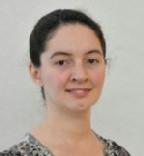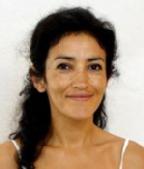Summary results
The team at Warwick are helping to support on-going gambiense Human African Trypanosomiasis (gHAT or sleeping sickness) interventions and global efforts to eliminate the disease through mathematical modelling under the two research projects, HAT MEPP and NTD Modelling Consortium, which combine the research expertise of mathematical modellers, health economists, epidemiologists and a software developer at the University of Warwick and Swiss TPH.
The results of the two projects are summarised below:
See the Glossary for a description of commonly used terms and acronyms associated with the HAT projects.
Matching the gHAT model to real case data
 State-of-the art statistical fitting methodology has been used to automate calibration of a model of gambiense Human African Trypanosomiasis (gHAT) to longitudinal data (2000–2016) across endemic health zones of the Democratic Republic of Congo (DRC). Through modelling with this data we aim to quantify key underlying factors which contribute to the observational and transmission variation across the country.
State-of-the art statistical fitting methodology has been used to automate calibration of a model of gambiense Human African Trypanosomiasis (gHAT) to longitudinal data (2000–2016) across endemic health zones of the Democratic Republic of Congo (DRC). Through modelling with this data we aim to quantify key underlying factors which contribute to the observational and transmission variation across the country.
The image opposite shows how well the model fits to the timeseries of reported cases, and where there has been a change in the passive case detection rate during the data collection period.
Data and analysis tool: Retrospective (2000-2016) DRC gHAT case data by health zone is available to view online via a data and analysis tool (GUI), providing online access to the vast amount of data and results of this research project in a user-friendly way.
Peer-reviewed paper: Crump, RE, Huang, C, Knock, E, Spencer, SEF, Brown, P, Miaka, EM, Chancy, S, Keeling, MJ, Rock, KS (2021). Quantifying epidemiological drivers of gambiense human African Trypanosomiasis across the Democratic Republic of Congo. PLoS Comp Biol. Paper summaries: English, French
Identifying regions of DRC requiring intensified strategies from projections
Mathematical modelling has been used to study the  overall impacts of combinations of the currently available intervention methods on transmission across the DRC and highlight regions requiring intensified interventions to achieve elimination of transmission (EOT) by the WHO’s 2030 goal. The Warwick gHAT model - previously developed and fitted to longitudinal human case data in DRC (see above) – was used to predict the expected numbers of active cases, passive cases and new infections.
overall impacts of combinations of the currently available intervention methods on transmission across the DRC and highlight regions requiring intensified interventions to achieve elimination of transmission (EOT) by the WHO’s 2030 goal. The Warwick gHAT model - previously developed and fitted to longitudinal human case data in DRC (see above) – was used to predict the expected numbers of active cases, passive cases and new infections.
Data and analysis tool: Projected case detections, new infections and estimated year of elimination of transmission of gHAT for DRC health zones, resulting from different intervention strategies, are available to view online via a data and analysis tool (GUI), providing online access to the vast amount of data and results of this research project in a user-friendly way.
Forthcoming paper: Huang, C, Crump, RE, Brown, P, Spencer SEF, Miaka, EM, Shampa, C, Keeling, MJ, Rock, KS (2020). Shrinking the gHAT map: identifying target regions for enhanced control in DRC [pre-print, not peer reviewed]. Paper summaries: English, French
Cost and cost-effectiveness evaluations
 The Warwick gHAT model has been further expanded to provide the cost and cost-effectiveness of the four intervention strategies (see opposite) in terms of net benefit (cost of interventions vs cost of ill-health/disability/death), which is added to the model. Costs include diagnosis, confirmation, and staging via lumbar puncture, well as the cost of the drug itself and the administration. The research offers a number of different options highlighting the most efficient intervention strategy to achieve elimination by 2030 and the optimal strategy to lower costs.
The Warwick gHAT model has been further expanded to provide the cost and cost-effectiveness of the four intervention strategies (see opposite) in terms of net benefit (cost of interventions vs cost of ill-health/disability/death), which is added to the model. Costs include diagnosis, confirmation, and staging via lumbar puncture, well as the cost of the drug itself and the administration. The research offers a number of different options highlighting the most efficient intervention strategy to achieve elimination by 2030 and the optimal strategy to lower costs.
Data and analysis tool: Projected costs of different intervention strategies and cost-effectiveness for 5 health zones in DRC are available to view online via a data and analysis tool (GUI), providing online access to the vast amount of data and results of this research project in a user-friendly way.
Forthcoming paper: Antillon, M, Huang, C, Crump, RE, Brown, P, Snijders, R, Miaka, EM, Rock, KS, Tediosi, F (2020). Economic evaluation of gHAT elimination campaigns in five distinct transmission settings in DRC pre-print, not peer reviewed]. Paper summaries: English, French
Elimination thresholds for the gHAT model
 Predicting the time to elimination of gHAT transmission in different circumstances is pivotal to our research. Analysis has been undertaken to identify a threshold value for the deterministic model that equates to the mean extinction time of the associated stochastic model.
Predicting the time to elimination of gHAT transmission in different circumstances is pivotal to our research. Analysis has been undertaken to identify a threshold value for the deterministic model that equates to the mean extinction time of the associated stochastic model.
We study this problem with the help of an effective "birth-death" description of infection and recovery processes and present a practical method to estimate the distribution of extinction times. This work can be used in the future to enable more robust predictions for time to local elimination of transmission when using deterministic models.
Peer-reviewed paper: Aliee, M, Rock, KS, Keeling, MJ (2020). Estimating the time to extinction of infectious diseases in mean-field approaches. Journal of the Royal Society Interface. Paper summaries: English, French
Optimising screening with low and falling case numbers
With limited numbers of active screening teams and resources, it is important to optimise their activities with the aim of driving towards elimination. With gHAT case numbers decreasing, we investigate how to optimise active screening visits to individual villages in DRC, such that the costs of the screening programmes can be minimised, while continuing to avert disability-adjusted life years. A stochastic gHAT infection model has been implemented across a range of active screening strategies and the net monetary benefit (NMB - cost of interventions vs cost of ill-health/disability/death) of each calculated.
Peer-reviewed paper: Davis, C, Rock, KS, Antillón, M, Miaka, EM, Keeling, MJ (2021). Cost-effectiveness modelling to optimise active screening strategy for gambiense human African trypanosomiasis in endemic areas of the Democratic Republic of Congo. BMC Medicine. Paper summaries: English, French
Researchers
HAT MEPP lead:(Associate Professor, Warwick) |
 |
|
(Professor, Warwick) |
 |
|
(Professor, Warwick) |
 |
|
(Group leader, Swiss TPH) |
 |
|
(Associate Professor, Warwick) |
 |
|
(Associate Professor, Warwick) |
 |
|
Emily Crowley (Scientific Project Manager) |
 |
|
(PDRA, Swiss TPH) |
 |
|
(PDRA, Warwick) |
 |
|
(PDRA, Warwick) |
 |
|
(PDRA, Warwick) |
 |
|
(Software Developer, Warwick) |
 |
|
(PhD student, Warwick) |
 |
|
(PhD student, Warwick) |
 |
Associated team
|
(Group leader, Swiss TPH) |
 |
|
(PDRA, Swiss TPH) |
 |
|
(Professor, Oxford) |
 |
Former team members
|
(PDRA, Warwick) |
 |
|
(PDRA, Warwick) |
 |
